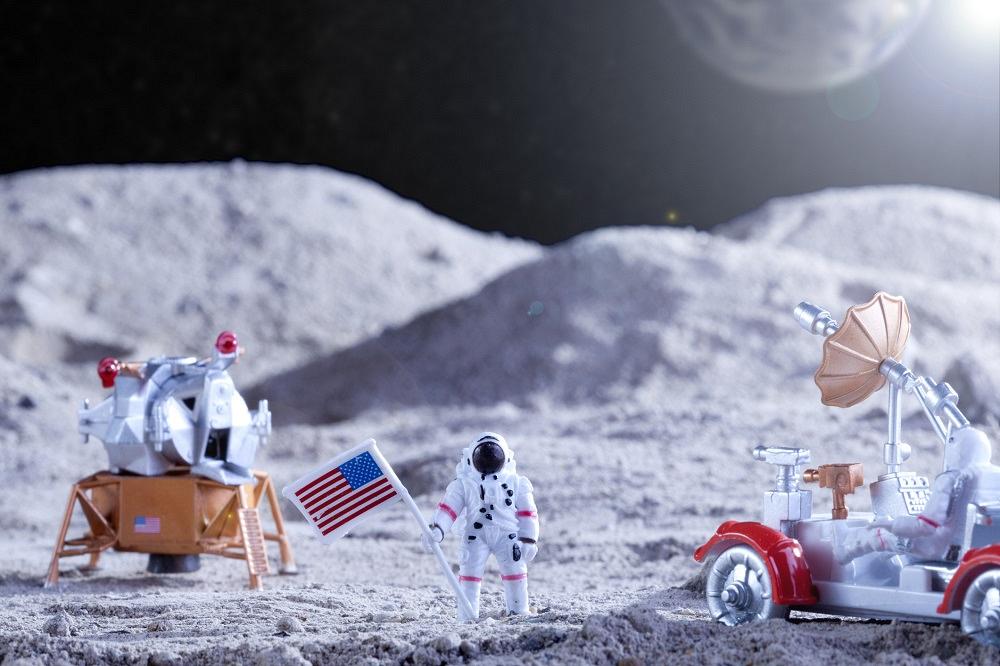Senior Editor
- FMA
- The Fabricator
- FABTECH
- Canadian Metalworking
Categories
- Additive Manufacturing
- Aluminum Welding
- Arc Welding
- Assembly and Joining
- Automation and Robotics
- Bending and Forming
- Consumables
- Cutting and Weld Prep
- Electric Vehicles
- En Español
- Finishing
- Hydroforming
- Laser Cutting
- Laser Welding
- Machining
- Manufacturing Software
- Materials Handling
- Metals/Materials
- Oxyfuel Cutting
- Plasma Cutting
- Power Tools
- Punching and Other Holemaking
- Roll Forming
- Safety
- Sawing
- Shearing
- Shop Management
- Testing and Measuring
- Tube and Pipe Fabrication
- Tube and Pipe Production
- Waterjet Cutting
Industry Directory
Webcasts
Podcasts
FAB 40
Advertise
Subscribe
Account Login
Search
Space exploration, metal fabrication, and moving forward
Apollo 11 was about exploration—so is the metal fabrication industry
- By Tim Heston
- July 23, 2019

The 50th anniversary of the Apollo 11 moon landing reminds everyone in the metal fabrication industry to remain curious and keep looking up. Getty Images
In the early 2000s I recall making my way to Marshall Space Flight Center in Huntsville, Ala., not to visit the museum (though I had done that) or be a tourist of any sort, but to visit an engineer responsible for a retractable-pin friction stir welding system that towered not far outside his office. The welding head wasn’t large, but the fixture was enormous, big enough to weld a Space Shuttle. That, of course, is what it did, fusing the seams of the Shuttle’s aluminum-lithium tanks.
About five years after that I recall talking with Chris Thompson, who in 2008 was vice president of structures at SpaceX, about the new way the company was tackling space exploration.
In 2011 I recall talking with Gene Wilson of Hardwick Co., a Birmingham, Ala.-based structural rolling shop. Wilson, who started working at the shop as a teenager in the 1950s, recalled a group of men arriving from Huntsville. The men arrived with proprietary plate and worked with the fabricators at Hardwick to roll it into a cone. Those cones formed the shell of space capsules.
Apollo anniversary tributes blanketed media outlets over the past week, and I didn’t mind. In many ways, it reminded me why I enjoy covering the metal fabrication business. It’s a business of exploration, and not just because rockets happen to incorporate fabricated metal. It’s because the people who thrive like to solve problems.
Let’s face it; there are easier ways to make a living. Metal fabrication is capital-intensive. The profits aren’t sky-high either, and everyone in the supply chain is scrambling to provide value. Fabrication can occur at the service center, at the custom fabricator, and at the OEM. A custom fabricator’s customers and suppliers can be its greatest competition. If you don’t serve our needs, that’s fine. We’ll just fabricate parts ourselves.
So what draws people to this incredibly competitive market? It goes back to problem-solving, be it a new sheet metal design for a product, an alternative fabrication or software technology, an efficient way to run a plant floor, or a combination of all the above. Profit makes the problem-solving sustainable, but the problems are what propels the best in this industry. People don’t just ask “What happened?” and wallow. They immediately ask, “What’s next?,” learn, and move forward.
And what grander “next” is there than space exploration? It has kept the curious looking up for more than 50 years, well before Apollo, before Hardwick Co. cone-rolled proprietary plate for space capsules for the Mercury program. When the curious keep looking up, literally and metaphorically, we all move forward.
subscribe now

The Fabricator is North America's leading magazine for the metal forming and fabricating industry. The magazine delivers the news, technical articles, and case histories that enable fabricators to do their jobs more efficiently. The Fabricator has served the industry since 1970.
start your free subscriptionAbout the Author

Tim Heston
2135 Point Blvd
Elgin, IL 60123
815-381-1314
Tim Heston, The Fabricator's senior editor, has covered the metal fabrication industry since 1998, starting his career at the American Welding Society's Welding Journal. Since then he has covered the full range of metal fabrication processes, from stamping, bending, and cutting to grinding and polishing. He joined The Fabricator's staff in October 2007.
- Stay connected from anywhere

Easily access valuable industry resources now with full access to the digital edition of The Fabricator.

Easily access valuable industry resources now with full access to the digital edition of The Welder.

Easily access valuable industry resources now with full access to the digital edition of The Tube and Pipe Journal.
- Podcasting
- Podcast:
- The Fabricator Podcast
- Published:
- 04/16/2024
- Running Time:
- 63:29
In this episode of The Fabricator Podcast, Caleb Chamberlain, co-founder and CEO of OSH Cut, discusses his company’s...
- Industry Events
16th Annual Safety Conference
- April 30 - May 1, 2024
- Elgin,
Pipe and Tube Conference
- May 21 - 22, 2024
- Omaha, NE
World-Class Roll Forming Workshop
- June 5 - 6, 2024
- Louisville, KY
Advanced Laser Application Workshop
- June 25 - 27, 2024
- Novi, MI































